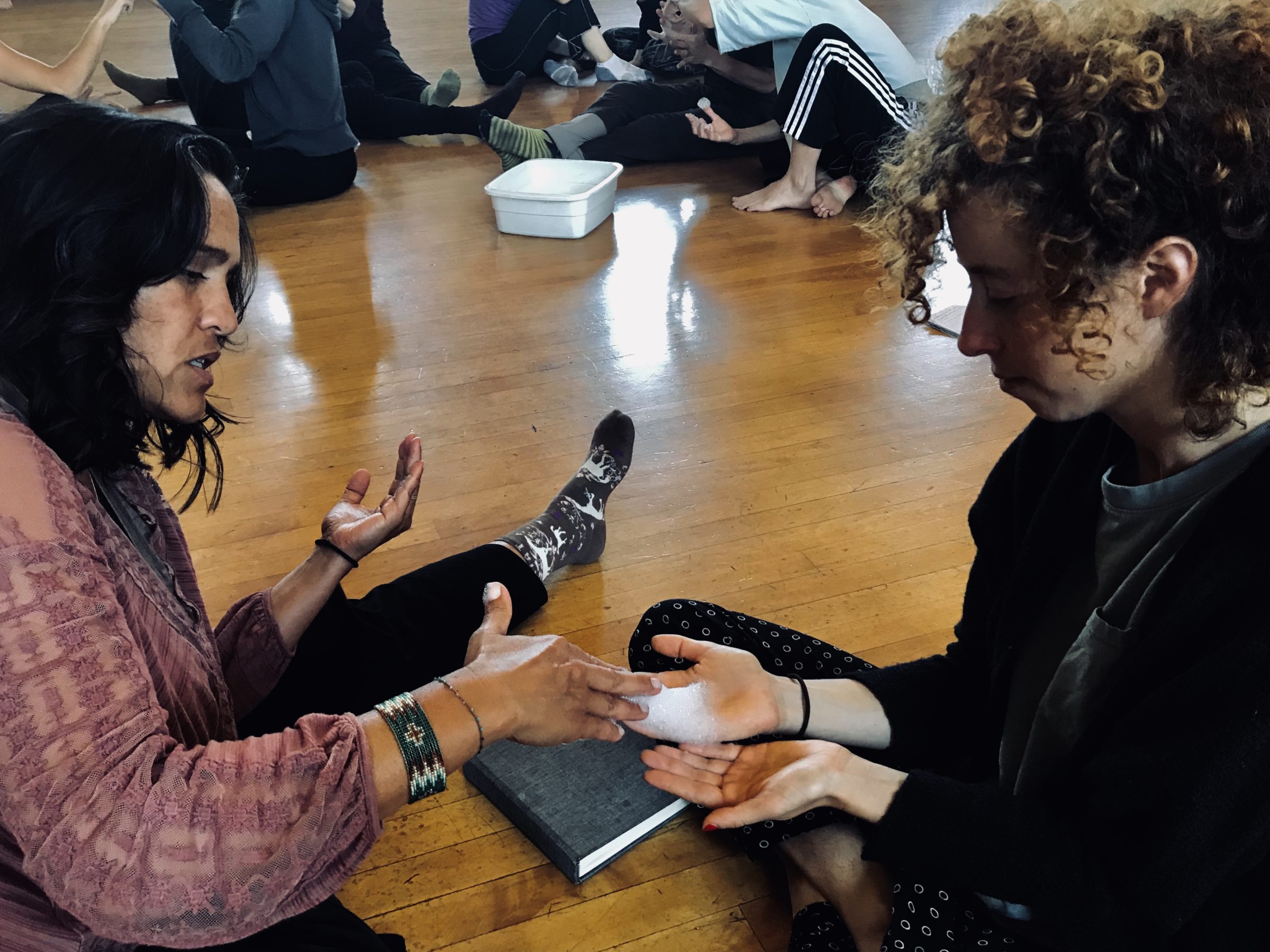Fascia is often called connective tissue—the viscous goop that connects, divides, and slides between muscles, organs, skin, and cells. It has also been found to be active, intelligent, communicative, and a sensory organ—liquid, solid and mucus. Fascia research stretches between communities of biologists, massage therapists, clinicians, anatomists and pathologists, yoga and pilates teachers, embryologists, pharmaceutical researchers and doctors and dancers, where each is partially connected to each other. They have gathered every since 2007 and are still learning to get along, to talk across their different vocabularies, affects and experimental systems and enactments of fascia.
In engaging with fascia I am influenced by work of feminist theorists of biology who have shown how the gene, or the neuron, or the hormone is from the beginning a biologically impure object. There are no entities or events, they argue, that can legitimately lay claim to being biological and not also cultural or economic or psychological or historical. Biology is an entanglement of bio/cultural relations. As part of my research on fascia I set up a practice as research movement lab at UC Davis and taught workshops engaging fascia at dance festivals at Humbolt State, Montreal, Toronto Dance Festival and the Berlin Sensing in Festival. This work aligns with the work of Practice as Research scholars who argue that dance and other art based inquiry is a field in which knowledge is produced and is considered a means of investigating rather than an object of investigation. This field includes the subjectivity of the practitioner, therefore embracing the turn in the arts and humanities towards subjective knowledge making, rather than positivist, objective practices. Although an artificial divide has historically separated thinking about art and scientific inquiry a profound relationship can be found between the two. This study intersects both scientific and arts-based practice-as research inquiry. We used a dance studio and our own bodies as experimental laboratories to explore contemporary medical, biological, and movement research into fascia. In being lured into thinking about our bodies as excitable tissue, we were curious how dancing bodies would be moved into action by the science stories being told about the fascia system: how might these stories influence the way they think with the moving body, are in relation to other kinds of bodies and about being in relation to the ecologies that they are entangled with?
Performance Creation/Research, Dance/Somatics, Practice/Theory
